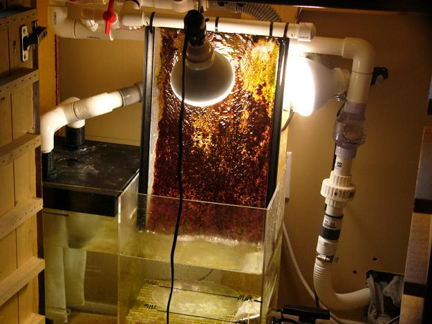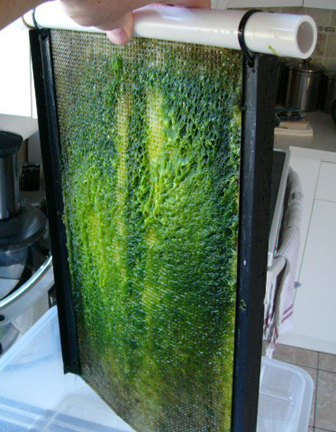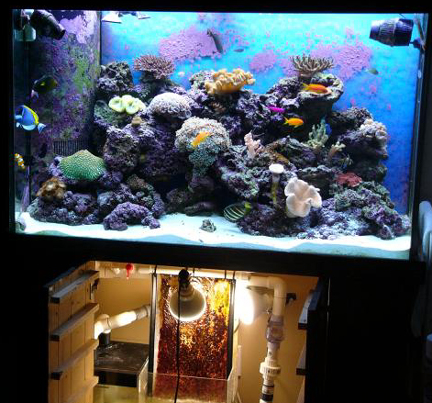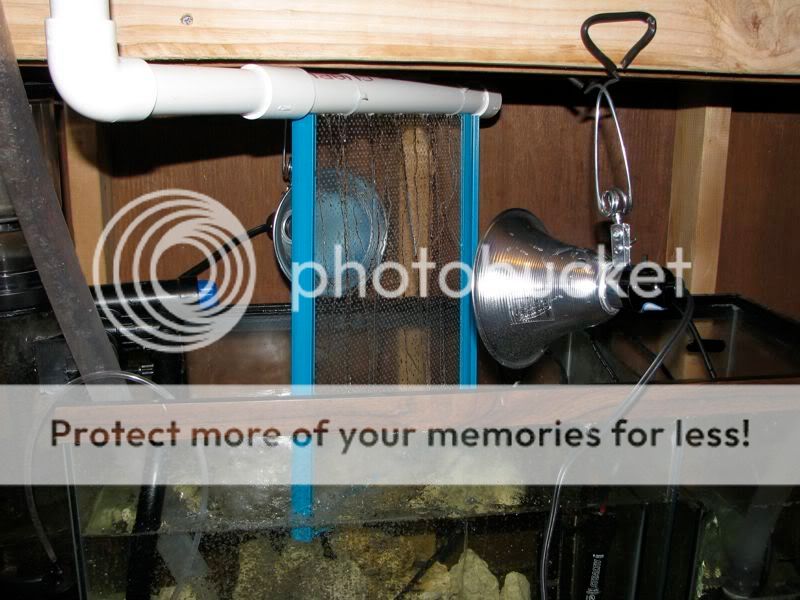SantaMonica
Reefing newb
Success of the Day:
"Mxett" on the MD site: "I installed a simple [scrubber] over my refugium. It uses an old plastic fruit juice container and a syphon [which makes a surge device] to dump 2 litres onto a white plastic chopping board which lays horizontally over the top of the refugium. A reflective CFL [bulb] is situated just 10cm above this board. The surge occurs every 30 seconds, lasting for 15 seconds. Growth on the [scrubber] has been excellent. Harvesting the algae is performed every 1 to 2 weeks per SM's instructions. [should be weekly :)] N & P have never been detectable in my system, BUT I have always struggled with a very persistant nuisance red algae! It threatened to overtake my entire tank in the months before installing this [scrubber], which is only a modest size for my 800 litre cube. Anyway, after 3 months of using the [scrubber] I can confidently say I have little to none of this red algae left! My purple tange eats it and always has, but with less nutrients available to it, it has just withered away, and he just finishes it off. Overall a great success over a difficult pest. Thanks SM for providing the inspiration and idea to create, install and use such a cheap, easy and effective natural filter."
"Mxett" on the MD site: "I installed a simple [scrubber] over my refugium. It uses an old plastic fruit juice container and a syphon [which makes a surge device] to dump 2 litres onto a white plastic chopping board which lays horizontally over the top of the refugium. A reflective CFL [bulb] is situated just 10cm above this board. The surge occurs every 30 seconds, lasting for 15 seconds. Growth on the [scrubber] has been excellent. Harvesting the algae is performed every 1 to 2 weeks per SM's instructions. [should be weekly :)] N & P have never been detectable in my system, BUT I have always struggled with a very persistant nuisance red algae! It threatened to overtake my entire tank in the months before installing this [scrubber], which is only a modest size for my 800 litre cube. Anyway, after 3 months of using the [scrubber] I can confidently say I have little to none of this red algae left! My purple tange eats it and always has, but with less nutrients available to it, it has just withered away, and he just finishes it off. Overall a great success over a difficult pest. Thanks SM for providing the inspiration and idea to create, install and use such a cheap, easy and effective natural filter."






